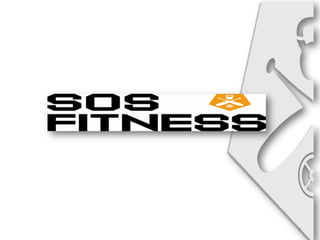Sos portion size
- 1. 1
- 2. 2
- 3. âWeâre finding that portion size can influence intake as much as taste. Large packages and containers can lead to overeating foods we do not even find appealing.â ~ Brian Wansink, PhD, John Dyson Endowed Chair in the Applied Economics and Management Department at Cornell University, and author of âMindless Eatingâ 3
- 5. 5
- 6. Maintaining a healthy weight is a balancing act 6
- 7. . 7 7
- 8. The following illustrations are representative of comparative sizes. Calories expended by various physical activities are approximations and will vary with age, gender, height/weight, and intensity of the activity. Two different weights are used as examples in the following slides. 8
- 9. Guess the calorie difference! 3-inch diameter 6-inch diameter 9
- 10. 210 more calories 10
- 11. 11
- 12. 50 minutes Based on 130-pound person 12
- 13. Guess the calorie difference! 1 cup spaghetti 2 cups spaghetti with sauce & with sauce & 3 small meatballs 3 large meatballs 13
- 14. 525 more calories 14
- 15. 15
- 16. 2 hours and 35 minutes Based on 130-pound person 16
- 17. Guess the calorie difference! 2.4 ounces 6.9 ounces 17
- 18. 400 more calories 18
- 19. 19
- 20. 1 hour and 10 minutes Based on 160-pound person 20
- 21. Guess the calorie difference! 21
- 22. 257 more calories 22
- 23. 23
- 24. 1 hour and 30 minutes Based on 130-pound person 24
- 25. Guess the calorie difference! Coffee, 8 oz. Mocha coffee, 16 oz. (with whole milk & sugar) (with steamed whole milk & mocha syrup) Large coffee image courtesy of renee_mcgurk (Renee McGurk) at http://flic.kr/p/9agbB4 under a Creative Commons Attribution license: http://creativecommons.org/licenses/by/3.0/ 25
- 26. 305 more calories 26
- 27. 27
- 28. 1 hour and 20 minutes Based on 130-pound person 28
- 29. Guess the calorie difference! 29
- 30. 350 extra calories 30
- 31. How long would you have to golf (walking & carrying clubs) to burn 350 more calories? 31
- 32. 1 hour Based on 160-pound person 32
- 33. 33
- 34. Portion sizes: Cheese 1 Â― ounces of cheese = 4 stacked dice 34
- 35. Portion sizes: Meat or Poultry 3 ounces cooked = a deck of cards 35
- 36. Portion sizes: Fish 3 ounces cooked = a check book 36
- 37. Portion sizes: Â― and 1 cup 1 cup = 1 Tennis ball Â― cup = Â― Tennis ball 37
- 38. Portion sizes: 1 teaspoon & 1 tablespoon 1 teaspoon = the tip of a thumb to the first joint 1 tablespoon = 3 thumb tips 38
- 39. 39 39
- 40. 40 40
- 41. 41 41
- 42. 100 calories x 2.5 servings = 250 calories 42
- 43. âNever eat more than you can lift.â ~Miss Piggy, the Muppet 43
Editor's Notes
- As one example, Dr. Wansink gave away five-day-old popcorn to moviegoers.Some people receivedenormous buckets while other received smaller ones. Both sizes held more popcorn than a typical person could finish.Yet when the buckets were weighed after the movie, those with the bigger buckets ate an average of 53 percent more.
- If you downsize your portion size and feel a smaller portion looks too small âĶ serve it on a smaller plate so it looks larger. Note the difference in the appearance of one cup of cereal when a smaller bowl is used. Using a smaller plate or bowl also can help you eat less according to research by Professors Brian Wansink and Koert van Ittersum. Larger plates can make a serving of food appear smaller. For example, in a study conducted at a health and fitness camp, campers given larger bowls consumed 16% more cereal than those given smaller bowls. Their estimates, however, were 7% lower than the estimates of those eating from the smaller bowls.
- The Nutrition Facts label on this 20-oz. beverage bottle it lists the number of calories in an 8-oz. serving (100) even though the bottle contains 20 oz. or 2.5 servings. To figure out how many calories are in the whole bottle, you need to multiply the number of calories in one serving by the number of servings in the bottle (100 x 2.5). You can see that the contents of the entire bottle actually contain 250 calories even though what the label calls a "serving" only contains 100.











































